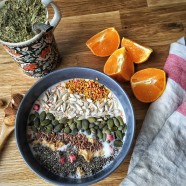
Minerals are referred to as the building blocks of the body whereas vitamins are viewed as catalysts. Vitamins are organic substances while minerals from plants and animals are inorganic substances. Chemical reactions in the body depend on minerals. They are critical for creating enzymes that enhance or initiate these chemical reactions for life itself. Minerals are vital and mandatory for all cellular reactions throughout the body. The process of chelation tends to occur in the intestinal tract from the newly formed ions. Dissolved minerals convert into mineral salts and then become ions; (an ion is a molecule with one or more electrons added or absent which now possess either a negative or a positive charge). The chelation process provides stability, allowing these ions to pass through the gut wall and into the blood stream.
The main composition of minerals within the body is the chelated form. To ensure a successful chelation process, minerals should be taken with a protein. To aid this process, the amino acids found in protein, along with stomach enzymes and acids, are all required elements to be present in adequate amounts. These mineral ions are innately directed to particular tissues and destinations in the body, including bone, organs and glands.
Essential Minerals (Macrominerals) and Trace Minerals
Boron
Bone building (coordinates major nutrients involved in bone health: vitamin D, calcium, magnesium and phosphorus), motor skills, learning and memory, boosts our own antioxidant protection and reduces oxidative stress
Best sources: Green leafy vegetables, nuts and seeds, fruit, dried fruit, legumes, vegetables, prunes and raisins. Boron is found in low amounts in animal protein and most grains
Calcium
Healthy teeth and bones, works with other minerals and vitamins, cellular metabolism, nerve transmission, blood clotting, muscle stimulation and a stabilizer for pH blood levels
Best sources: All dairy products, tofu, oysters, kale, broccoli, parsley, leafy greens, asparagus, cabbage, kelp, watercress, raw nuts and seeds, whole grains, legumes, carob, figs, prunes and yeast
Chromium
Necessary for fat metabolism and glucose utilization, activates enzymes for metabolism of cholesterol, comprises part of the glucose tolerance factor (GTF) and fatty acid production and energy
Best sources: Nutritional yeast, whole grains, pork, calf liver, kidney, meat, cheese, black pepper, wheat bran, rye, yellow cornmeal and chile peppers
Chloride
Acid and alkaline balance, production of hydrochloric acid and an active participant in the chloride shift to do with plasma transport, one of the three most important electrolytes in the body and lung excretion
Best sources: Table salt or sea salt has sodium chloride; many vegetables and a few foods with higher amounts of chloride include seaweed, rye, tomatoes, celery, lettuce and olives
Cobalt
Constituent of B12, acts as a substitute for manganese and zinc in the activation of several enzymes, repair of the myelin sheath, assists with glucose transportation from the blood into the cells and assimilation of iron
Best sources: Figs, buckwheat, cabbage, beet greens, lettuce, spinach, watercress, raw milk and cheese, apricots, liver, red meat, sea vegetables, goat’s milk, apricot kernels and Irish moss
Copper
Produces energy by oxidizing (cytochrome c) for cell respiration, promotes healthy blood vessels, cofactor for several enzymes, impacts the mobilization and absorption of iron from the liver and other storage areas, involved in the production of the myelin sheath and facilitates in collagen formation
Best sources: Liver, kidney, egg yolk, whole grains, legumes, shellfish, nuts, poultry and dark green leafy vegetables, avocado, soy and cauliflower
Germanium
Healthy immune system, increases oxygen performance, antioxidant, enhances Natural Killer (NK) cells and T cells, protects against food allergies and auto-immune disorders
Best sources: Garlic, Shitake mushrooms, onion, bran, whole wheat, vegetables, meat, dairy, seeds, and herbs such as comfrey, aloe vera, ginseng and suma
Fluoride
Essential for teeth and bones, reduces bone loss, reduces hardening of the arteries and improves hearing in the elderly
Best sources: Seafood, tea, milk, cheese, meat, eggs, fruit and vegetables (depending on soil content)
Iodine
Necessary for the thyroid gland to produce thyroid hormone (once in the thyroid gland iodine becomes part of thyroxine hormones T3 and T4, involved in metabolism and regulation of cellular oxidation)
Best sources: Sea vegetables like kelp, dulse, nori, wakame, bladderwack, clams, oysters, lobsters, crabmeat and ocean fish. Fruits and vegetables must have iodine in the soil for the trace mineral to be present.
Iron
Important component of hemoglobin and myoglobin, holds oxygen in the blood, energy production, collagen synthesis and promotes healthy circulation
Best sources: Liver and organ meats, beef, lima beans, legumes, dark green leafy vegetables, sardines, prune juice, blackstrap molasses, pumpkin seeds, eggs, fish, poultry and spinach
Magnesium
Promotes relaxation, nervous system, muscular sensitivity, heart health, enzyme catalyst, converts fats, protein and carbohydrates to energy, and involved in the pH of blood and body fluids
Best sources: Rice bran, millet, cornmeal, green leafy vegetables, legumes, soy, whole grains, nuts and seeds. Magnesium is available in most foods.
Manganese
Collagen and urea formation, production of cholesterol and fatty acids, digestion of proteins, bone development, protein synthesis, cofactor for several enzymes and synthesis of mucopolysaccharides
Best sources: Liver, kidney, wheat germ, legumes – especially beans and peas, whole grains, eggs, dark green leafy vegetables, wheat germ, wheat and nuts
Molybdenum
Essential for three enzymes (1. metabolizes iron from the liver 2. metabolizes fat 3. breaks down sulfites, constituent of zanthine oxidase and aldehyde oxidase
Best sources: Beans, legumes, whole grains, liver, wheat germ, dark green leafy vegetables, split peas, cauliflower, eggs, brown rice, garlic and spinach
Nickel
Protects cell membranes, stimulates a number of enzymes engaged in hormone and fat metabolism, involved with RNA and activation of liver enzyme arginase (a manganese containing enzyme)
Best sources: Seafood, whole grains, buckwheat, legumes, seeds, broccoli, cabbage, soy, cauliflower, spinach, meat, shellfish, dark chocolate, nuts, carrots, onions, licorice, mushrooms, sprouts, Brussels sprouts and asparagus
Potassium
One of the three most important electrolytes in the body, CO-2 transport, cellular integrity, membrane transport, muscle contraction, nerve transmission, enzyme activity, heart function, growth, metabolism of proteins and carbohydrates and water balance
Best sources: White beans, legumes especially the beans, dark leafy greens, baked potatoes (with skin), dried apricots, acorn squash, yogurt (plain), fish, avocados, mushrooms (white), kiwi, bananas, rice bran, molasses, seaweed, nuts and seeds
Phosphorus
Cell reproduction, cell division, metabolic function, bones and teeth, conversion of carbohydrates to energy, stabilizes the bloods pH acid and alkaline balance, several enzymes and B vitamins require the presence of phosphorus to work and kidney function
Best sources: Meat, fish, poultry, dairy, nuts and seeds, legume family, egg yolk, whole grains, vegetables and fruit
Selenium
Immune system, takes out toxic metals, constituent of glutathione, inhibits lipid peroxidation, protects cell membranes, production of prostaglandins and promotes healthy muscles, heart and liver
Best sources: Liver, kidney, nutritional yeast, broccoli, mushrooms, cabbage, celery, seafood, onions, whole grains, garlic, cucumber, radish and vegetables
Silicon (silica)
Bones, connective tissue and vascular walls, hair, skin and nails, and nervous system
Best sources: Horsetail (herbs), oatstraw tea (decoction process), soy, seafood, bell peppers, beets and green leafy vegetables
Sodium
One of the three most important electrolytes in the body, Co 2 transport, nerve transmission, muscle contraction, amino acid uptake and a main element in the lymph system
Best sources: Beets and beet greens, table salt, whey powder, dulse, kelp, baking powder and soda, butter, carrot juice, celery, celeriac, cheese, goat milk, milk, buttermilk, olives, seafood, meat and poultry
Strontium
Similar role to calcium, healthy bones, prevents tooth decay and energy production in cells
Best sources: All legume family, whole grains, leafy vegetables in particular spinach and kale, root vegetables especially carrots, parsnips, brazil nuts, dairy, seafood and most plant food
Sulphur
Main constituent of the amino acids methionine, cysteine and the cysteine component of chondroitin sulfate and collagen, liver, brain, kidney, required for healthy bones, tendons, cartilage, hair, skin and nails
Best sources: Dried beans, horseradish, Brussels sprouts, fish, eggs, meat, organ meats, soy, dairy, poultry, garlic, kale, cabbage, cauliflower, legumes, turnips, wheat germ and watercress
Vanadium
Regulates sodium in the body, formation of bones and teeth, growth, reproduction, metabolism of blood cholesterol levels and catecholamine
Best sources: Whole grains (particularly buckwheat), olives, legumes, liver, seafood, meat, vegetable oil, dill and radishes
Zinc
Cofactor in twenty five enzyme reactions, assists production of protein and nucleic acids (DNA and RNA), important role in the immune system, enhances T cell production, healing, growth, detoxifies alcohol, bones, eyes, prostate and pancreas, glands, kidneys, skin and hair
Best sources: Oysters, herring, meat, black eyed peas, brazil nuts, egg yolk, liver, whole grains, nutritional yeast, pumpkin seeds, cashews, cheddar cheese, chick peas, dulse, kelp, lamb, fish, sardines, wheat germ, soy, poultry, and legumes including lentils
Copyright © 2016 – All Rights Reserved – Michelle Honda Ph.D.
Announcement
Look for my new forthcoming books “Reverse Heart Disease Naturally” (Jan.31, 2017) and “Reverse Inflammation Naturally” (May 31, 2017) and “Reverse Thyroid Diseases Naturally” (Fall 2017)
Where to Purchase:
Reverse Gut Diseases Naturally
Reverse Heart Disease Naturally
Hatherleigh Press Page Buy Book RGDN
Local Book Stores in US and Canada
Disclaimer
While close attention was given to the accuracy of information in this article, the author accepts neither responsibility nor liability to any person with respect to injury, damage, loss or any circumstances involving alleged causes directly or indirectly related to the information in this article. The sole purpose is to educate and broaden ones awareness. This information is not meant to replace medical advice or services provided by a health care professional.





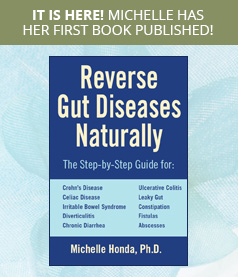

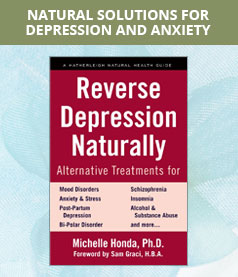
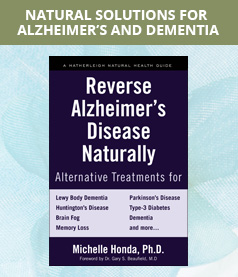
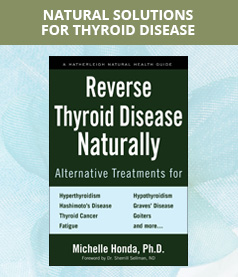

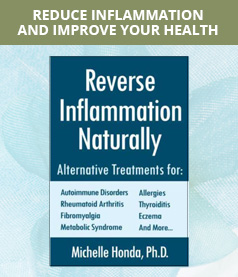
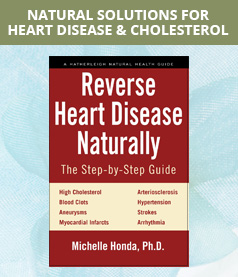
Follow Us!